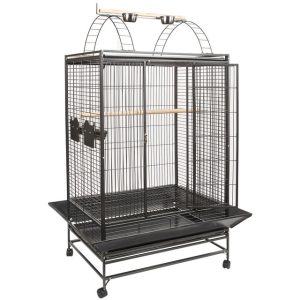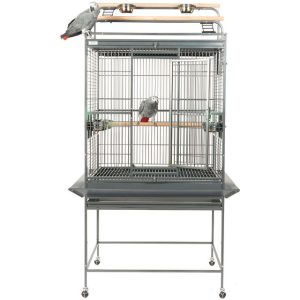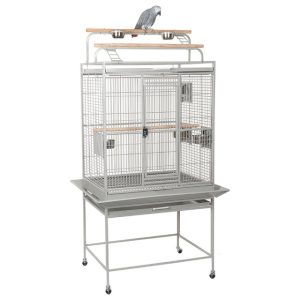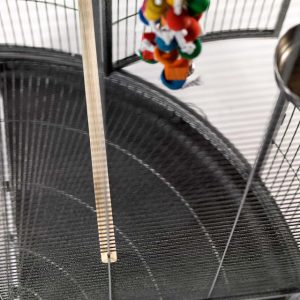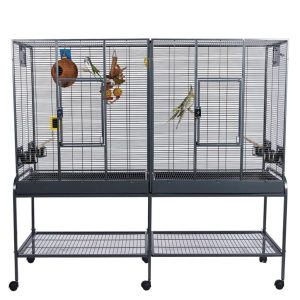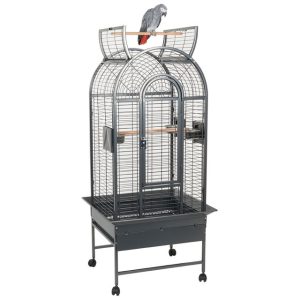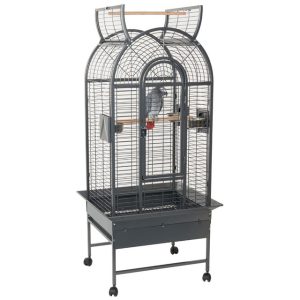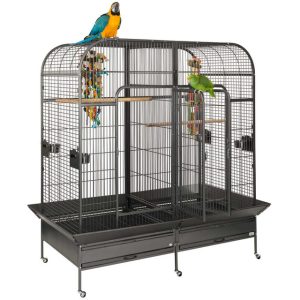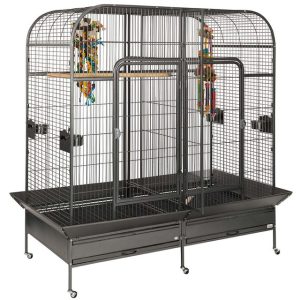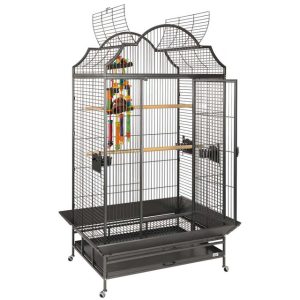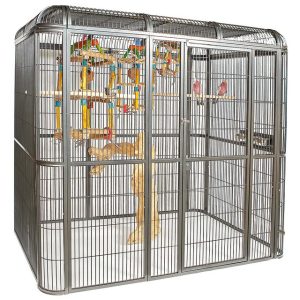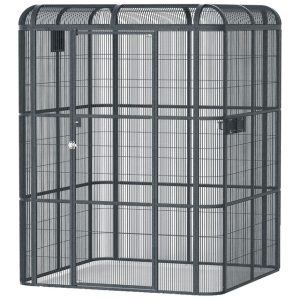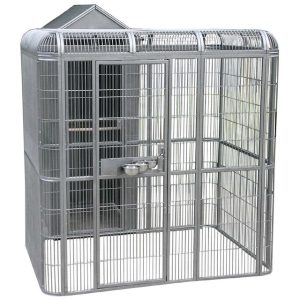As with any pet bird, the cage is the first, and most vital, purchase you will make. The most important thing to look for is space – your birds need lots of room to fly. Even a large bird who will spend a lot of time outside on a perch like one of the larger Macaws will need a cage with enough space to climb and stretch his wings. The cage also needs to be easy to clean.
The bottom of the cage will need clearing of droppings and other mess, so ideally you need a removable tray that can be thoroughly washed on a regular basis. The bottom should be covered in wood shavings or shredded paper.
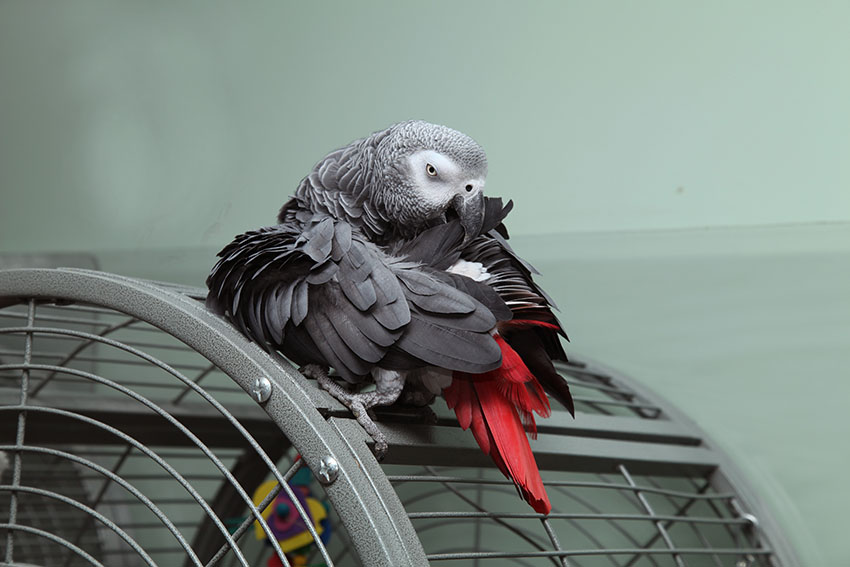
Your parrot’s cage is his home, so it needs choosing with care
Choosing a Cage
When choosing a cage, you need to make sure the bar spacing is appropriate for the size of parrot you are going to keep. Cockatiels, and any species smaller than that, require 1cm inch bar spacing; larger ones need 1.5-2cm, and large parrots should be given cages with 2.5cm spacing. The reason is less to do with climbing issues, and more about parrots getting their heads stuck. If the bird can squeeze its head between the bars, it will.
Many parrots like to climb, so horizontal bars are a must for them.
Being intelligent and inquisitive birds, parrots can soon get bored. The cage needs to have plenty of variety, from different types of perch and climbing apparatus, to a rota of ever-changing toys. The more space you can provide, the better.
Positioning a Cage
Location is important, as your birds will be spending much – if not all – of their time in the cage. It needs to be somewhere neither too hot nor too cold. Kitchens should be avoided, as the various fumes from non-stick pans and gas hobs can prove fatal to the less robust members of the parrot family. You also need to avoid exposing the birds to any cleaning product fumes, fly sprays and other aerosols, paint fumes, tobacco smoke, carbon monoxide from boilers and car exhausts, and any plug-in air freshener or scented candle. These things are all pollutants.
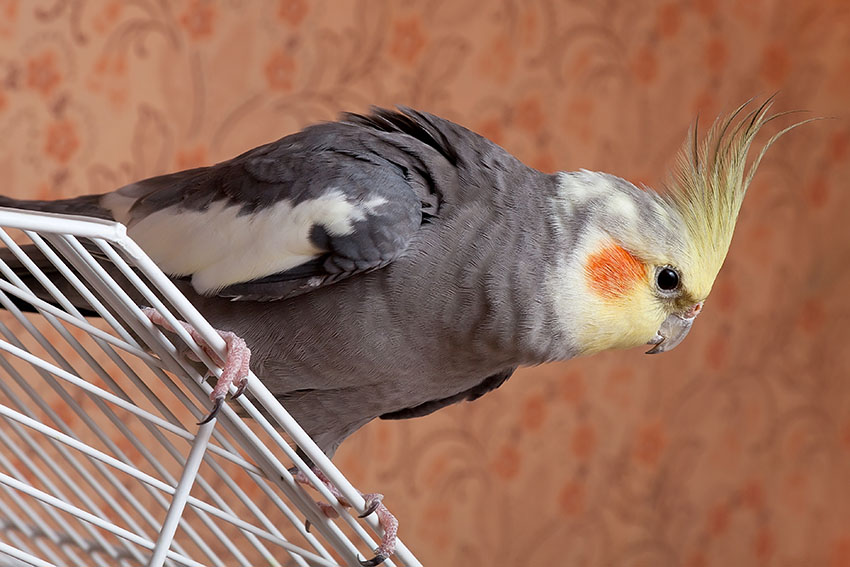
The location of the cage is very important
Cages should not be exposed to drafts, and window ledges are not a good idea, as draft combines with direct sunlight to produce a stressful environment.
Letting Parrots Out
If you are keeping a pair of birds or a single larger parrot indoors in a relatively small cage, they will need to spend regular time outside. Although capable of finding their way to and from the cage, you will all get a lot more from the experience of you have hand-tamed your birds. A large parrot will spend most of his time outside the cage, and smaller species will need regular free-flight session.
It’s best to stay in the same room as your free-flying birds. They are very inquisitive, and will happily chew the tops of books, the seams of wallpaper, the leaves of houseplants, and anything else they can get their beaks into. If you’re there to discourage them, they will soon get the message. Having said that, there are plenty of examples of mischievous birds who do the things they’re not supposed to, for pure devilment. That’s the price you pay for keeping a highly intelligent animal – naughtiness!
See the Parrot training section of this guide for more details.
Cage Doors
Parrots are smart birds, and will investigate door-fasteners with keen interest. Some of the flimsier designs can be opened by a persistent parrot beak, so the door needs to be robust enough to withstand these attentions, or you will have to secure it with a small padlock.
Food Bowls
Having different feeding stations in cages helps diffuse squabbles and problems with territorial breeding birds who decide that all the food is theirs! A good rule of thumb is to provide one bowl per bird, and one extra. This gives everyone in the cage a choice of feeding places. Some can be on the cage floor, but most should be elevated, or attached to the sides of the cage.
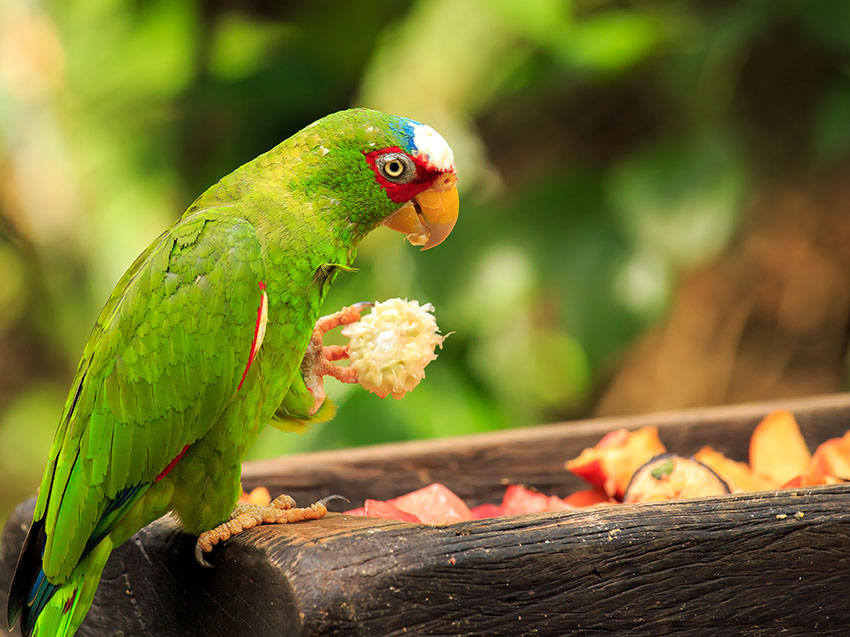
A White-Fronted Amazon feeding
Water Bowls and Bottles
Water bottles are an efficient way of satisfying your birds’ liquid requirements. Open bowls and containers are likely to get soiled very quickly with droppings and bits of food. This is fine as long as you keep an eye on the hygiene and clean the bowl regularly. The bottle needs to be fastened securely to the side of the cage.
Parrot Perches
Variety is key here. The parrot’s feet will be gripping a perch for much of the day, so different widths and textures (the rougher the better, including some stone or concrete perching spots) will help keep feet and toes exercised and flexible. If the perches and ledges in your parrot cage are rough, you won’t need to worry about extra pedicure; although retailers do stock ‘pedi-perches’, and some salesmen will tell you that these are essential for keeping a parrot’s nails trimmed. Parrots in the wild don’t need to buy pedi-perches – the wood, rock and bark provided by nature does that.
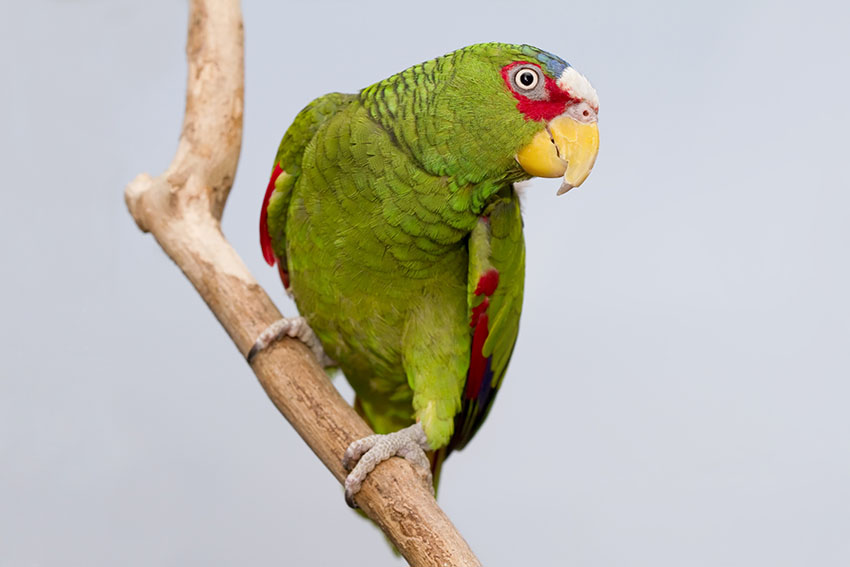
Parrots like this White-Fronted Amazon need a variety of perches
Although variety is a good thing, a cage should never be over-crowded with perches. The parrots need lots of flying room, and a cage set up as a perch-punctuated obstacle course isn’t going to make the birds happy.
Homemade Perches
In the context of bird perches, ‘homemade’ simply means finding different types of sticks and branches and giving it a bit of a clean. Any wild-sourced wood should be scrubbed first, with hot water. No detergent is required, just water and a vegetable brush. Some owners clean their sticks in a very dilute bleach solution (100ml bleach to 2 litres water). If you do this, rinse the stick thoroughly afterwards. Pouring boiling water over the stick will kill any microbes, though, so the bleach really isn’t necessary.
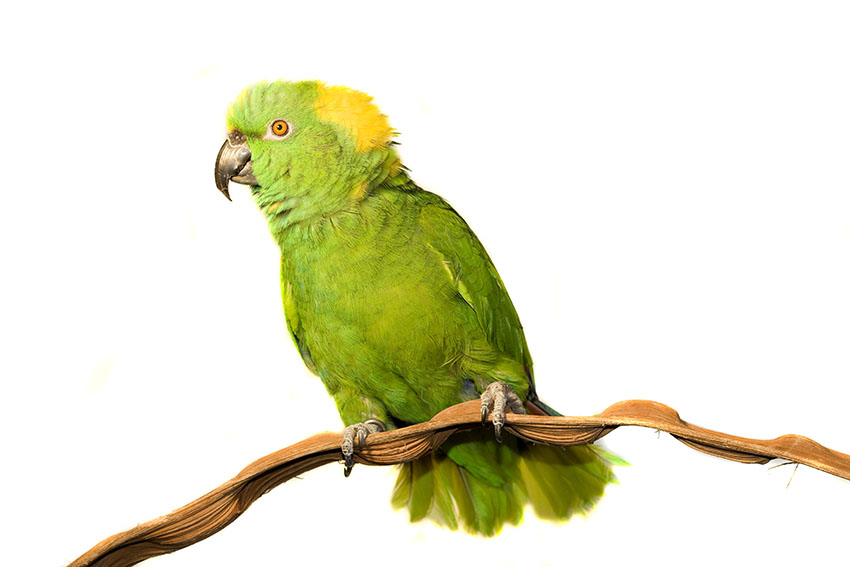
A happily perched Yellow-Naped Amazon
Always make sure the perch is completely dry before introducing to the cage – in the absence of direct sunlight, 20 minutes in an oven at 90C (200F) will do the job. Giving it a blast in the oven will also ensure there is nothing left alive either outside or inside the wood.
Over time a twig-perch will need to be replaced, usually because the parrot has chewed his way through it. Larger species will make very short work of a softwood perch.
Perches for Large Parrots
Macaws and other large species will need sturdy branches rather than twigs. Any bird kept for long periods outside the cage will require an external perch too – the kind of thing you see in zoos or larger pet shops. You can make one of these yourself; although many pet suppliers sell them, to make your life easier. Many of these perches come with food and water bowl fittings, with a waste tray beneath to catch all the mess.
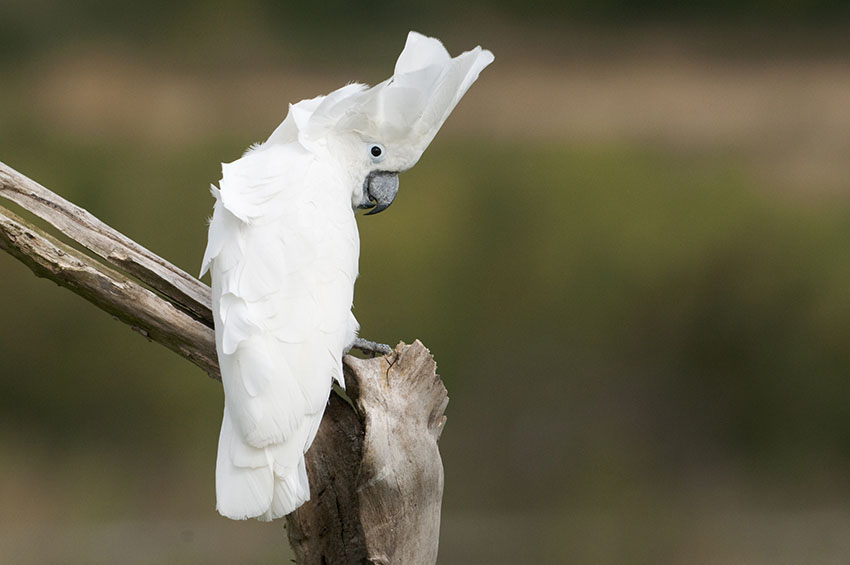
White Cockatoos and other large species need sturdy perches
Safe Wood for Perches
If you’re sourcing your own ‘wild’ sticks, you need to avoid any wood that might be toxic. It’s best to stick to native tree species, mainly because not all ornamental woods have been tried and tested in parrot cages. The following list includes native European tree wood that’s definitely okay for pet birds:
- Apple
- Ash
- Birch
- Beech
- Crab apple
- Elm
- Hawthorn
- Larch
- Lilac
- Maple
- Mountain ash (rowan)
- Mulberry
- Poplar
- Willow
- Rose
- Spruce
- Sycamore
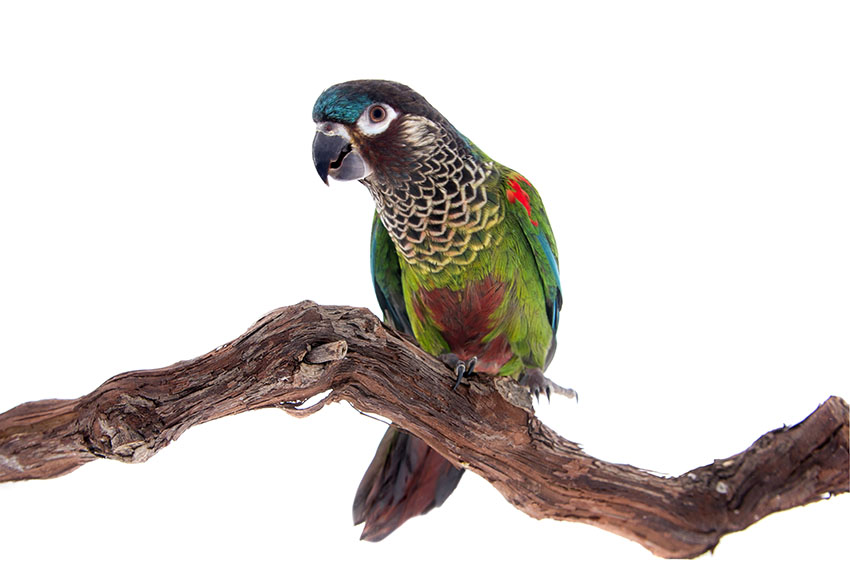
Parrots spend much of their time on perches, so these need to be parrot-friendly
These common non-native species are also safe to use:
- Almond
- Bamboo
- Cottonwood
- Date
- Douglas fir
- Dracaena
- Eucalyptus
- Fig
- Ginkgo
- Grape vines
- Hibiscus
- Hickory
- Lemon
- Lime
- Orange
- Palm
- Rubber plant
- Tree fern
- Yucca
Lots of other woods are probably perfectly safe to use, but why risk it? The list above includes species that most parrot owners will be able to source easily.
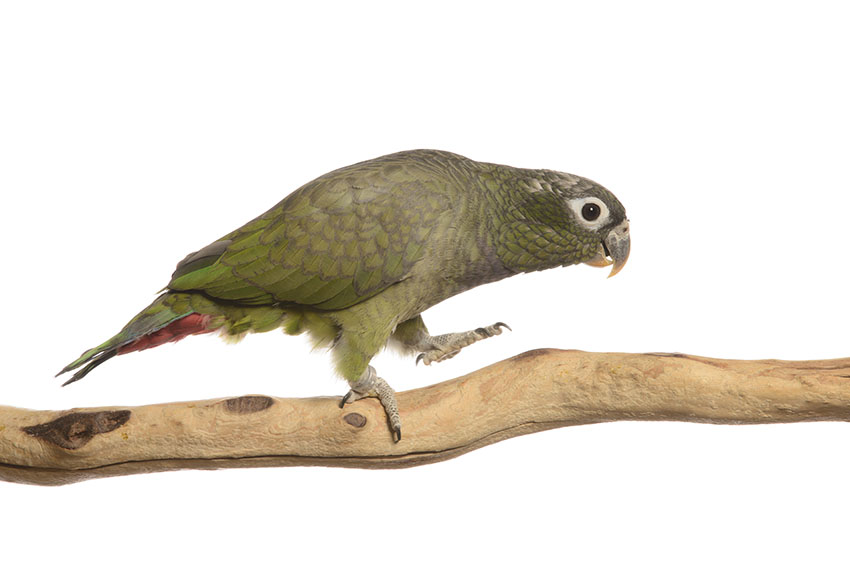
A Maximilian’s Parrot puts a perch through its paces
Most shop-bought perches are made from untreated pine, of the kind used in dowels, and this is fine. But avoid fresh pine, which has a sticky resin. Balsa wood is safe, but won’t last very long as a perch: even the smallest of parrots will chew through it very quickly.
Unsafe Wood for Parrots
The following common wild, garden and parkland species have been implicated in parrot health problems, so don’t use any of these as perches:
- Alder
- Apricot
- Azalea
- Box elder
- Boxwood
- Buckthorn
- Burdock
- Cedar
- Elder
- Heather
- Holly
- Horse chestnut
- Huckleberry
- Hydrangea
- Jasmine
- Juniper
- Laburnum
- Laurel
- Mango
- Myrtle
- Nectarine
- Nutmeg
- Oak
- Mistletoe
- Oleander
- Peach
- Plum
- Privet
- Rhododendron
- Sage
- Tobacco
- Walnut
- Witch hazel
- Wisteria
- Yew
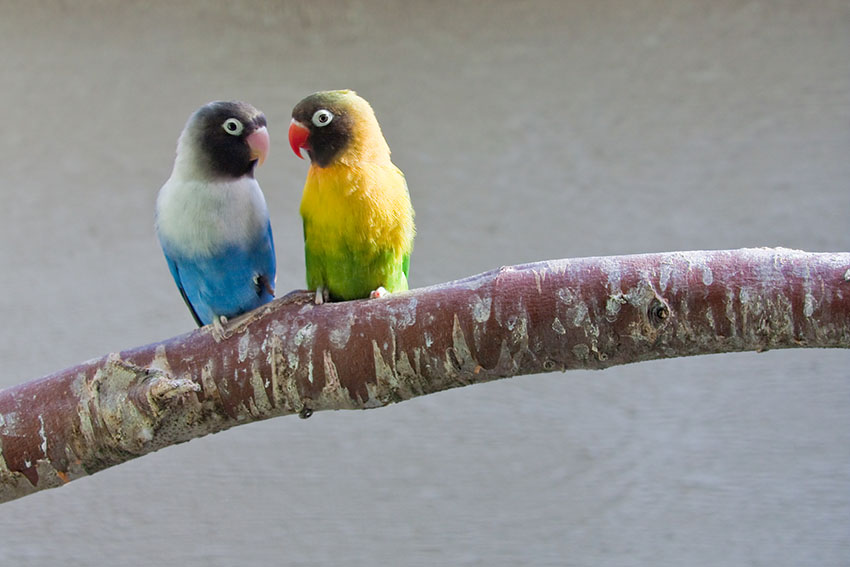
Masked Lovebird varieties
Avoid any treated woods unless obtained from a reputable pet dealer. Driftwood found on a beach will always be tempting as a cage ornament, but because you can’t always tell which species the wood came from, nor the toxic things it might have been in contact with, it’s best to avoid introducing it to cages.
Positioning Perches in a Cage
Parrots like to roost or rest in a relatively high spot in the cage, feeling much safer looking down on the world rather than having things moving overhead. It’s therefore a good idea to have more than one of these roosting perches, or, if you have a smaller cage rather than an aviary of bird room, to have the cage sufficiently high so that the positioning of the perches is less of an issue.
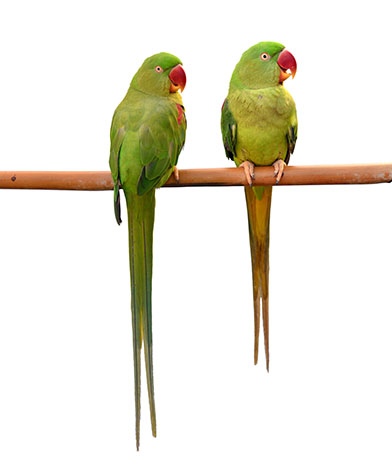
Alexandrine Parakeets comfortable on a perch
Rope Perches and Chain Perches
Although smaller species can have problems with rope, snagging their toenails, anything of cockatiel size or larger will get a great deal of fun and stimulation from a rope perch. Any man-made fibres should be avoided, as these can be pulled loose but not chewed through (at least, not by smaller parrots). This can lead to loops and snags that can catch legs, beaks or even necks. The same applies to chain or wire perches – avoid anything small enough to snag toes or large enough for heads or legs to get caught.
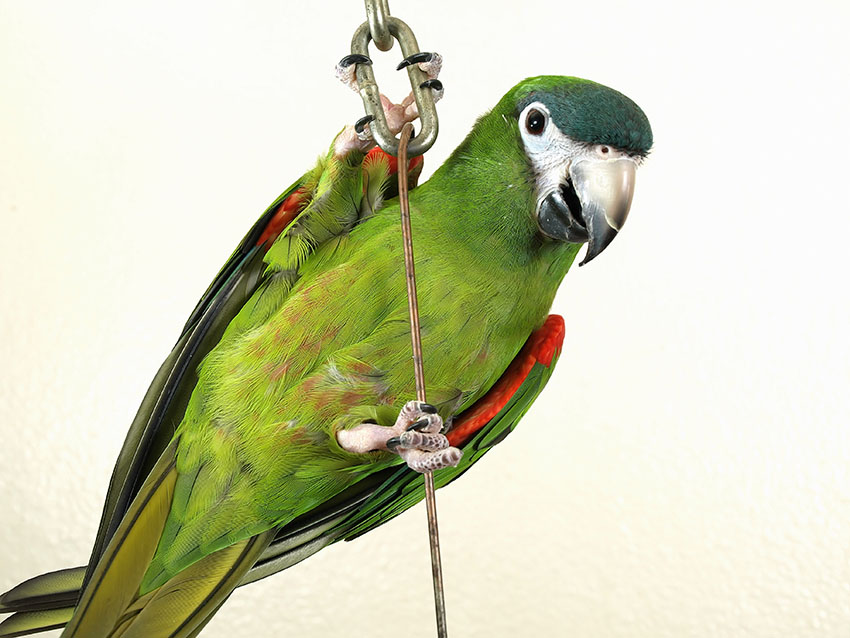
Red-shouldered Macaw, (Noble subspecies) on a chain perch
Opt for natural fibres, and, if room allows, provide rope perches – and swings, ladder, etc – of different widths and lengths. Many shop-bought ones come with a wire core, enabling the perches to be bent at interesting angles.
Parrot Baths
Bathing is an important part of a parrot’s weekly routine. The water loosens any dirt in the feathers, and also encourages the bird to preen. It’s also something that most parrots find highly enjoyable.
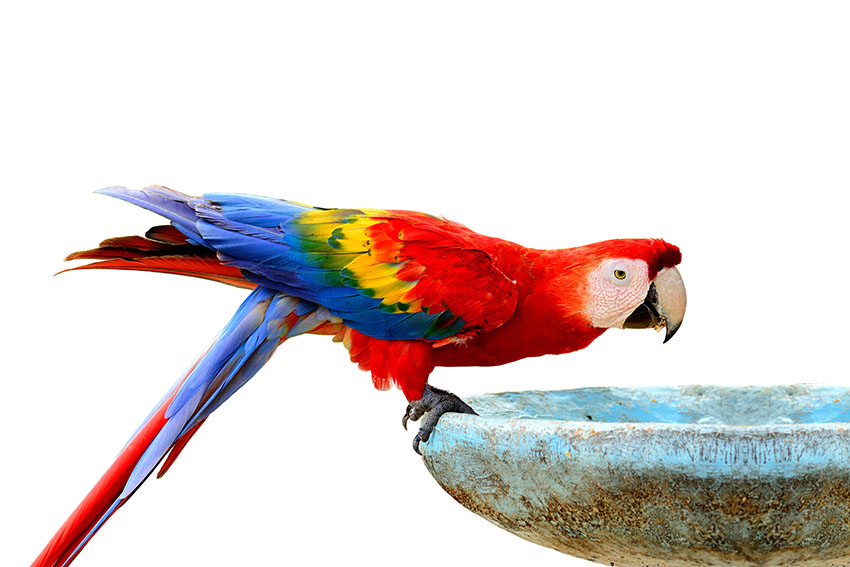
Parrots like this Scarlet Macaw love water
- A permanent bath in your cage is a good idea, but will need cleaning daily, as the parrots will soon mess it up, and will also use it as a drinking trough.
- You can arouse your parrot’s interest in the idea of getting wet by spraying him from a water mister bottle (from above, ideally, to simulate rain). Most birds will welcome the soaking, spreading their wings, putting their head down and holding their wings out a little, and fluffing up and shaking their feathers.
- As long as the weather (or room temperature) is warm, you can allow your parrot a mister shower or bird bath at least once a week – more, if he seems to like it a lot. Getting completely soaked is fine – the parrot will shake the water off. In hot weather this a great way for the birds to cool down.
- In colder weather, bathing can be kept to a minimum; and ideally you need a safe heater in the cage (e.g. a bird lamp) to speed up the drying process.
- If the bird are outside, bathing should be restricted to mornings in the winter, to prevent the parrot going to bed wet and possibly catching a chill.
- Larger parrots can be bathed in your own shower. You can buy suction-perches to attach to shower or bathroom walls for this purpose. Some birds can get quite attached to taps, and will happily bathe under them. The water must never be hot, and if your bird doesn’t like the procedure, abandon it.
- Some birds don’t take to the idea of showers and soakings at all. These will need to feel their own way into the world of personal parrot hygiene. Provide water in a custom-made parrot bath or bowl, and leave them to it. Eventually, the itchy skin and dry feathers will encourage these reluctant birds to take a dip.
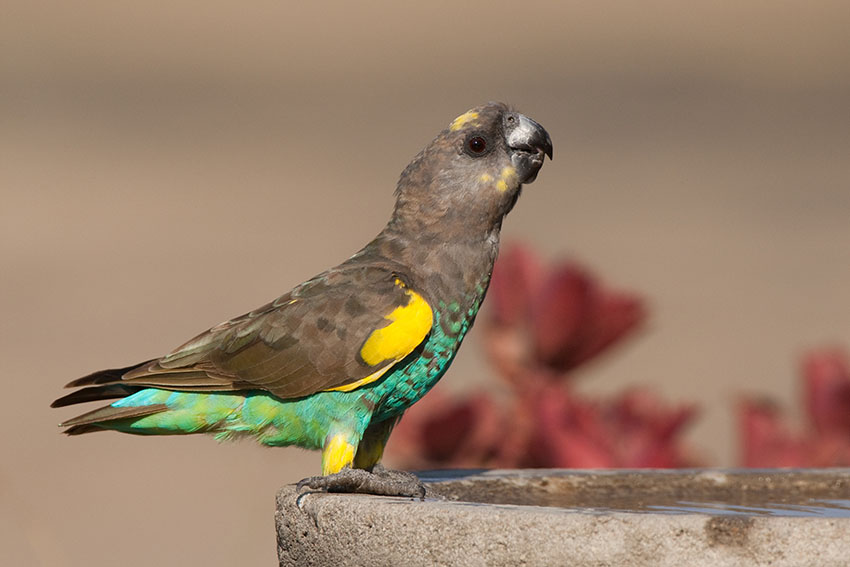
Meyers Parrots like to take the plunge
- Don’t force a reluctant bird to bathe. This will only make them even more frightened. Encourage the relationship with water by putting kale, spinach or other greens in the bath/bowl and let him play around and eat.
- You can use a towel to partly dry a wet bird, if the parrot seems happy with this arrangement. Never use a hair-dryer, though, unless you know for an absolute fact that there is no non-stick coating in the device – fumes from such things can be fatal for birds.
- Don’t use soap in the water, unless you need to wash something oily from the parrot’s feathers. Even then you should only use a mild detergent such as glycerine soap.
- After getting wet, parrots muscles begin to move rapidly, making it look as if the bird is shivering. This is normal, and is simply the bird’s way of warming up after a cool bathe.
Bath Water Temperature
Parrots should always be given cool or lukewarm water in their baths or showers. Don’t use water that has been refrigerated, and if your tap water is very cold, let it stand for 20 minutes or so before offering it as a bath. At the other end of the acceptable heat scale, room temperature is good. The bath water must never be hot, though. If you stick with a ‘cool to tepid’ scale, you’ll be fine.
If your birds live outside with a permanent water feature, they will work out for themselves when to take a dip. On really cold days you can add some hot water to bring the temperature up a little.

